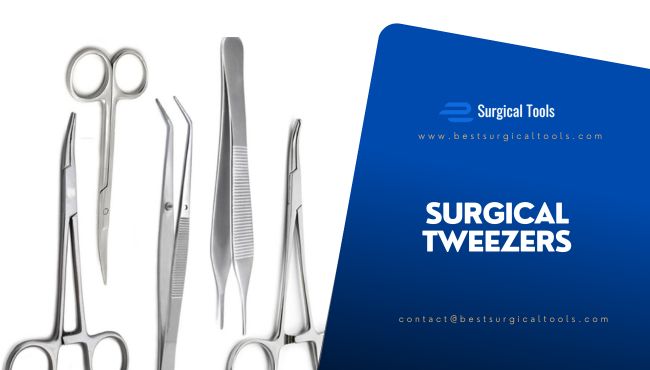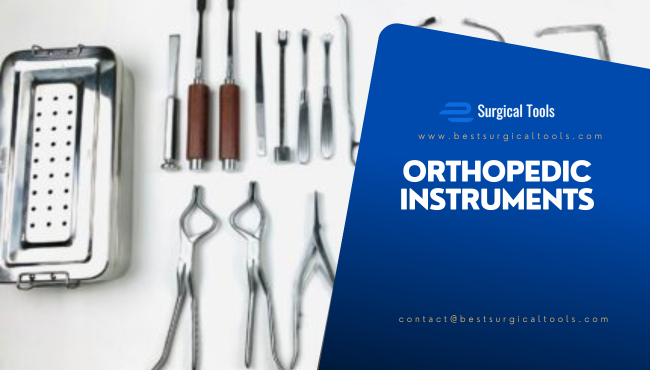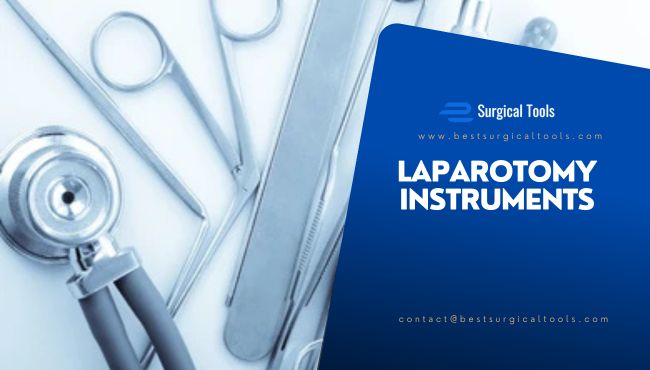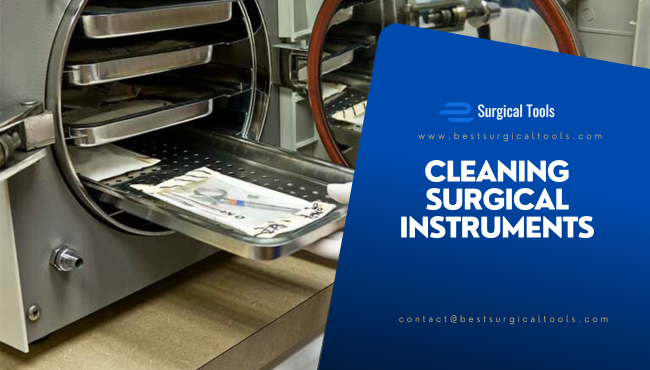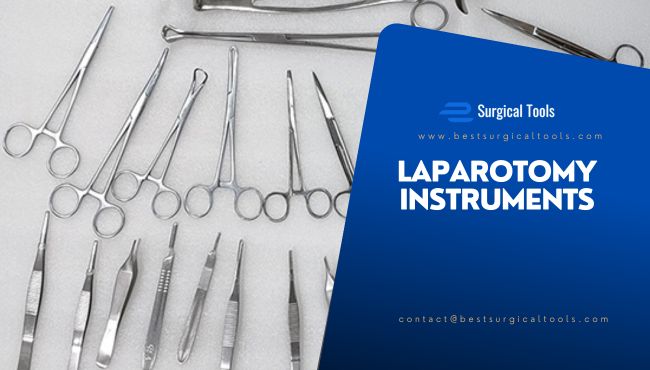
Laparotomy Instruments: A Complete Guide to Essential Surgical Tools
Laparotomy is no small feat—it’s a major open surgery that demands skill, precision, and the right tools to get the job done well. Whether it’s an emergency dive into the abdomen, an exploratory procedure, or a planned operation, Laparotomy Instruments are the unsung heroes ensuring everything goes smoothly. These specialized tools are key to keeping patients safe and helping surgeons work efficiently.
In this guide, we’ll walk you through the must-have Laparotomy Instruments and what they do, break down the types of forceps, retractors, scissors, and clamps you’ll see in action, and share some practical tips for keeping them in top shape. Knowing these tools inside out is a game-changer for surgeons, nurses, and hospitals aiming to deliver the best care possible.
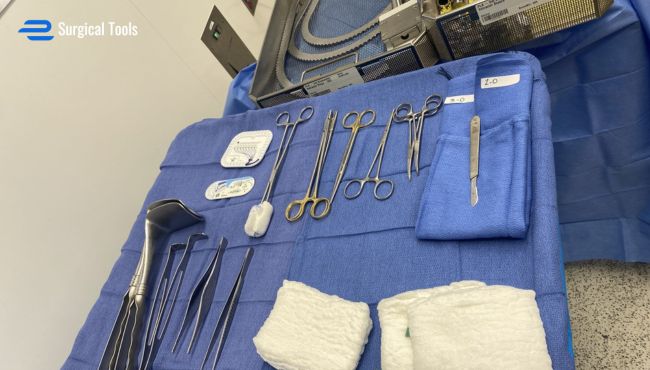
1. What Are Laparotomy Instruments?
Laparotomy Instruments are the go-to tools for open abdominal surgeries. They’re built to tackle specific tasks like slicing through tissue, stopping bleeding, gently handling organs, and giving surgeons a clear view of what’s going on inside. Every tool has its own job, designed to make the procedure as precise and trauma-free as possible. The lineup changes depending on the surgery, the patient’s needs, and the surgeon’s know-how.
2. Essential Laparotomy Instruments and Their Functions
Surgeons rely on a mix of everyday and specialized Laparotomy Instruments to get through a procedure. Here’s a rundown of the essentials and why they matter:
2.1 Scalpels and Blades
Scalpels are the sharp stars of the show, cutting clean lines into abdominal tissue. You’ve got the #10 blade for big, bold incisions, the #15 for finer, curvy cuts, and the #20-23 range for digging into deeper layers. They’re all about precision from the first slice.
2.2 Surgical Scissors
Scissors are the workhorses for snipping tissues, sutures, or anything else in the way. Mayo scissors tackle tough stuff like muscle and fascia, while Metzenbaum scissors handle delicate tissues with care. Operating scissors are the all-rounders, perfect for sutures and quick dissections.
2.3 Forceps (Tissue and Dressing Forceps)
Forceps are like the surgeon’s extra hands, grabbing and holding tissues just right. Adson forceps are great for delicate work, DeBakey forceps shine in vascular cases without causing harm, and Allis forceps grip firmly without overdoing it.
2.4 Hemostatic Clamps
Clamps keep bleeding in check by locking down blood vessels. Kelly clamps handle the big ones, Mosquito clamps nip tiny bleeders, and Kocher clamps dig into tougher tissues with a solid grip.
2.5 Retractors (Tissue and Organ Retractors)
Retractors pull back tissues and organs to open up the surgical field. The Balfour retractor stays put on its own, Richardson retractors reach deep, and Deaver retractors gently hold organs aside—each one’s a window into the action.
Ready to equip your surgical team with top-notch Laparotomy Instruments? Explore the best selection and expert advice at Best Surgical Tools. Find the perfect tools to elevate precision and patient care today!
3. Specialized Laparotomy Instrument Sets
Different surgeries call for different kits. A general Laparotomy Instruments set covers the basics—scalpels, scissors, forceps, and clamps. Gynecological sets throw in tools like Heaney clamps, while pediatric sets scale things down for smaller patients. Picking the right set means fewer hiccups and better results.
4. Best Practices for Handling and Maintaining Laparotomy Instruments
Taking care of Laparotomy Instruments isn’t just about longevity—it’s about safety too. Here’s how to keep them in fighting shape:
4.1 Cleaning and Sterilization
Rinse them off right after surgery to dodge crusty buildup. Enzymatic cleaners break down the gunk, and autoclaving (check out guidelines at cdc.gov) or chemical sterilization keeps them germ-free.
4.2 Proper Storage
Stash them in trays to avoid bangs and scratches. Sharp edges love silicone mats, and a humidity-controlled spot—like a hospital storage room—keeps rust away.
4.3 Regular Inspection and Maintenance
Give them a once-over for rust or dullness. A little lubrication keeps hinges smooth, and swapping out worn tools ensures every cut stays sharp and safe.
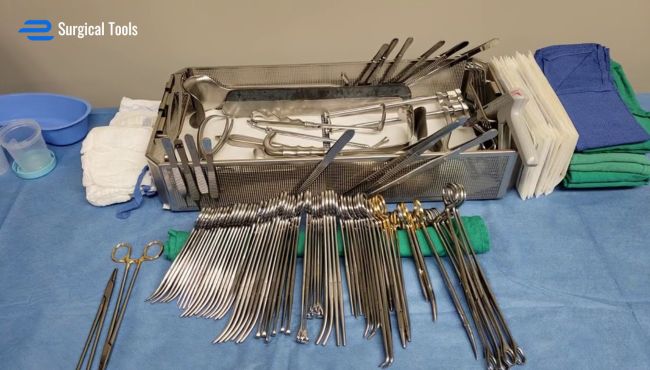
5. Why Choosing High-Quality Laparotomy Instruments Matters
Skimping on Laparotomy Instruments is a rookie mistake. Top-notch tools offer pinpoint control, cut down on tissue damage, and last longer—saving money in the long run. They also meet global safety standards (think who.int for more on that). Quality gear from trusted brands boosts patient care and keeps surgeries running like clockwork.
6. The Future of Laparotomy Instruments
The future’s looking bright for Laparotomy Instruments. Tech is shaking things up with less invasive options that speed recovery, ergonomic designs that ease the strain on surgeons, and even smart tools with AI tricks up their sleeves. Materials like titanium are making them lighter and tougher—surgery’s getting a serious upgrade.
Final Thoughts: The Importance of Using the Right Laparotomy Instruments
Laparotomy isn’t a walk in the park—it’s a high-stakes procedure where every move counts. The right Laparotomy Instruments make all the difference, smoothing out incisions, handling tissues with care, and keeping complications at bay. Surgeons and hospitals need to lean on quality tools, keep them spotless, and store them right. It’s not just about getting through the surgery; it’s about setting patients up for the best recovery possible. For more on surgical advancements, peek at mayoclinic.org—they’ve got the scoop.
Ready to equip your surgical team with top-notch Laparotomy Instruments? Explore the best selection and expert advice at Best Surgical Tools. Find the perfect tools to elevate precision and patient care today!
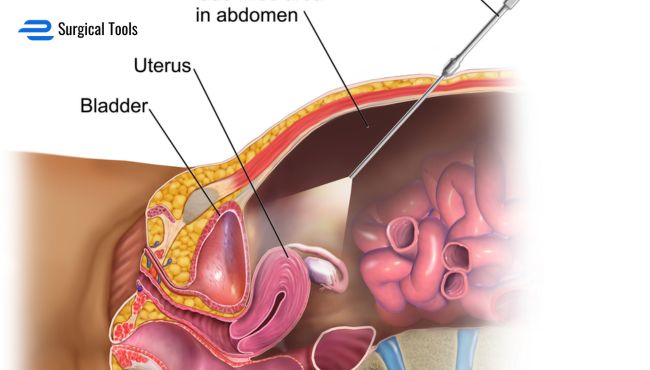
Frequently Asked Questions
What Are Laparotomy Instruments Used For?
Laparotomy Instruments are the tools surgeons use for open abdominal surgeries. They help with cutting tissue, controlling bleeding, holding organs, and giving a clear view—basically everything needed to make the procedure safe and smooth.
Why Are Laparotomy Instruments So Important?
These tools are a big deal because they boost precision and keep patients safe. High-quality Laparotomy Instruments mean fewer complications, less trauma, and better outcomes—surgery’s a lot tougher without them!
What’s in a Basic Laparotomy Instruments Set?
A standard set has scalpels for cutting, scissors for snipping, forceps for grabbing, clamps for bleeding control, and retractors for visibility. It’s the essential toolkit for tackling most abdominal surgeries.
How Do Surgeons Choose the Right Laparotomy Instruments?
It depends on the surgery type, patient needs, and the surgeon’s style. For example, delicate tissues call for Metzenbaum scissors, while big incisions need a #10 blade—experience guides the pick.
Can Laparotomy Instruments Be Used in Pediatric Surgeries?
Yep, but they’re scaled down. Pediatric Laparotomy Instruments are smaller and gentler, designed to handle tiny bodies with the same precision as adult sets.
How Should Laparotomy Instruments Be Cleaned?
Rinse them right after use to avoid buildup, scrub with enzymatic cleaners, and sterilize via autoclave or chemicals. Keeping them spotless is key for safety—check cdc.gov for protocols.
What Happens If Laparotomy Instruments Aren’t Maintained?
Dull or rusty tools can mess up a surgery—think jagged cuts or infections. Regular checks and lubrication keep them sharp and reliable.
Are There New Advances in Laparotomy Instruments?
Oh yeah! Think ergonomic handles, AI-assisted precision, and lighter materials like titanium. The future’s leaning toward less invasive, surgeon-friendly options.
Why Invest in High-Quality Laparotomy Instruments?
Cheap tools wear out fast and risk patient safety. Top-tier ones offer control, durability, and meet standards (like at who.int), saving headaches and cash long-term.
Where Can I Learn More About Laparotomy Instruments?
Hospitals train staff, but for a deep dive, sites like mayoclinic.org have great info on surgical tools and techniques. It’s a solid starting point!

